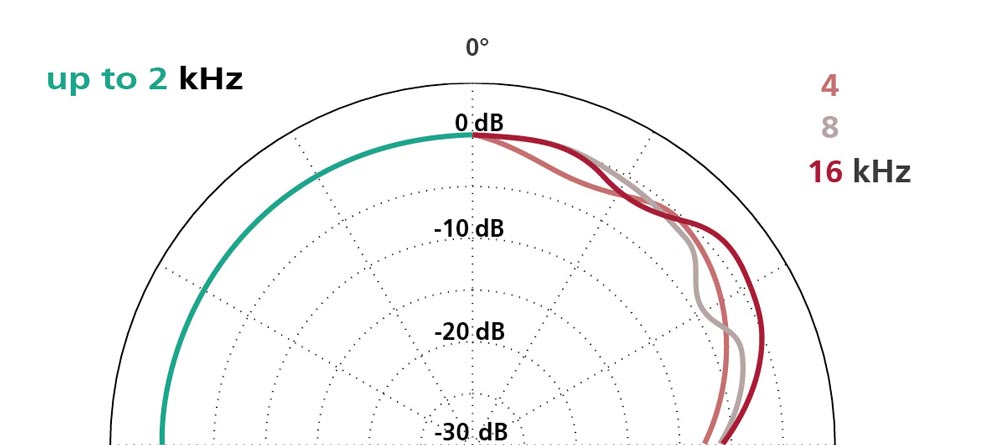Boundary-layer recording offers unobtrusive microphone placement possibilities; no stands or hanging fixtures are required.
When pressure transducers are used, the result is a hemispherical directional characteristic that is independent of frequency; thus it is not necessary to aim the microphones, and if the angle of sound pickup changes, the sound quality remains essentially the same.
The technique is based on an effect in physics by which sound pressure doubles along a sound-reflecting surface. If a transducer is placed directly on such a...
Boundary-layer recording offers unobtrusive microphone placement possibilities; no stands or hanging fixtures are required.
When pressure transducers are used, the result is a hemispherical directional characteristic that is independent of frequency; thus it is not necessary to aim the microphones, and if the angle of sound pickup changes, the sound quality remains essentially the same.
The technique is based on an effect in physics by which sound pressure doubles along a sound-reflecting surface. If a transducer is placed directly on such a surface, or is built within it as with the BLM 3, its sensitivity to direct sound will be twice that of an equivalent transducer in a free sound field. Its response to diffuse sound remains unchanged, however, causing a notable increase in the clarity of pickup for a given miking distance.
In theory an ideal transducer of this type would have a membrane of infinitesimally small size, and would be mounted flush with an infinitely large, perfectly sound-reflecting surface. In practice, the plate in which the small transducer of the BLM 3 is mounted assures reflection of only the high and medium frequencies.
To reflect sound at lower frequencies (greater wavelengths), the dimensions of the surface must be correspondingly larger. So the microphone should be placed on a floor, wall or ceiling, or mounted on another surface large enough to reflect the lowest frequencies of interest.
Since the plate of the BLM 3 is only 5 mm thick and the transducer is not mounted at its center, the edges of the plate have very little effect upon the sound pickup. The BLM 3g does not interfere with the natural sound field; off-axis sounds thus encounter very little frequency discrimination. Sound coloration is low, even for moving sound sources, because the frequency response is essentially the same for all angles within the hemispherical pickup pattern.
Microphones used near sound-reflecting surfaces ordinarily produce comb-filter effects. This does not occur with the BLM 3, since at the boundary in which the transducer is mounted there can be no phase difference between the direct sound and its reflection.
Ordinary pressure transducers show a difference in sensitivity between direct and diffuse sound at high frequencies. In a properly placed boundary-layer microphone, however, this difference occurs at all frequencies. The sound pressure for direct sound is doubled at an acoustic boundary (6 dB increase), while the essentially random phase relationships of reflections in the diffuse sound field cause the boundary-layer microphone's sensitivity to increase by only 3 dB. Thus a boundary-layer microphone will suppress diffuse sound somewhat, even though it is not directional. It will pick up less “room sound“ and the recording will be slightly “drier“ than it would be with an omnidirectional microphone.
The capsule itself is a classic electrostatic pressure transducer, which assures accurate reproduction of even the lowest frequencies along with the high signal-to-noise ratio and stable performance typical of professional condenser microphones. This type of transducer is inherently insensitive to wind and vibration and the BLM 3 is comparatively heavy, so it picks up very little solid-borne noise. For example, when footsteps are recorded, most of the sound reaching the microphone will be conducted through the air rather than the floor.
